My
List |
Addition Date
|
Target
|
Mission
|
Instrument
|
Size
|

|
2010-08-05 |
|
Spitzer Space Telescope
|
IRAC
|
3545x3600x3 |

|
-
PIA13316:
-
NASA's Great Observatories Witness a Galactic Spectacle
Full Resolution:
TIFF
(38.29 MB)
JPEG
(755.9 kB)
|

|
2010-07-28 |
|
Spitzer Space Telescope
|
IRAC
|
3000x3000x3 |
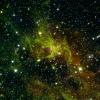
|
-
PIA13304:
-
Awash in Green and Red
Full Resolution:
TIFF
(27 MB)
JPEG
(1.548 MB)
|

|
2010-07-28 |
|
Spitzer Space Telescope
|
IRAC
|
2400x2400x3 |
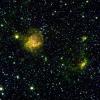
|
-
PIA13303:
-
Beastly Stars and a Bubble
Full Resolution:
TIFF
(17.3 MB)
JPEG
(871.4 kB)
|

|
2010-07-28 |
|
Spitzer Space Telescope
|
IRAC
|
1800x1800x3 |
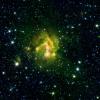
|
-
PIA13302:
-
A Shocking Outflow
Full Resolution:
TIFF
(9.735 MB)
JPEG
(406 kB)
|

|
2010-07-28 |
|
Spitzer Space Telescope
|
IRAC
|
6000x6000x3 |
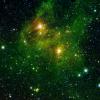
|
-
PIA13301:
-
Bright Lights, Green City
Full Resolution:
TIFF
(108 MB)
JPEG
(6.345 MB)
|

|
2010-07-14 |
|
Spitzer Space Telescope
|
IRAC
|
1881x1849x3 |
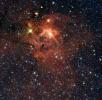
|
-
PIA13276:
-
Massive Young Star and its Cradle
Full Resolution:
TIFF
(10.45 MB)
JPEG
(789 kB)
|

|
2010-07-07 |
|
Spitzer Space Telescope
|
IRAC
MIPS
|
7600x3700x3 |
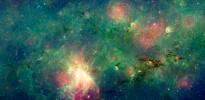
|
-
PIA13241:
-
The Invisible Dragon
Full Resolution:
TIFF
(84.36 MB)
JPEG
(4.221 MB)
|

|
2010-07-07 |
|
Spitzer Space Telescope
|
IRAC
MIPS
|
7600x3700x3 |
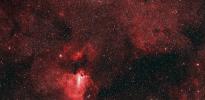
|
-
PIA13240:
-
Dragon's Lair
Full Resolution:
TIFF
(84.36 MB)
JPEG
(6.567 MB)
|

|
2010-06-24 |
|
Spitzer Space Telescope
|
IRAC
|
556x556x3 |
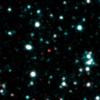
|
-
PIA13216:
-
Cool as a Stellar Cucumber
Full Resolution:
TIFF
(928.8 kB)
JPEG
(24.19 kB)
|

|
2010-05-20 |
|
Spitzer Space Telescope
|
IRAC
|
2804x1870x3 |
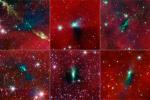
|
-
PIA13149:
-
Blobs House Twin Stars
Full Resolution:
TIFF
(15.73 MB)
JPEG
(558.6 kB)
|

|
2010-05-11 |
|
Spitzer Space Telescope
|
IRAC
|
3300x2400x3 |
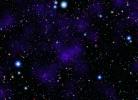
|
-
PIA13134:
-
Galactic Metropolis
Full Resolution:
TIFF
(23.76 MB)
JPEG
(536.5 kB)
|

|
2010-04-01 |
|
Spitzer Space Telescope
|
IRAC
|
2171x5085x3 |

|
-
PIA13005:
-
Orion's Dreamy Stars
Full Resolution:
TIFF
(33.16 MB)
JPEG
(603 kB)
|

|
2010-03-29 |
|
Chandra X-ray Observatory
Spitzer Space Telescope
|
Chandra X-ray Telescope
IRAC
|
3600x3547x3 |
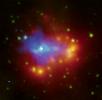
|
-
PIA12982:
-
Dusty Dead Star
Full Resolution:
TIFF
(38.31 MB)
JPEG
(303.8 kB)
|

|
2010-03-17 |
|
Spitzer Space Telescope
|
IRAC
IRAS
MIPS
|
2400x3000x3 |

|
-
PIA12965:
-
How to Spot a Primitive Black Hole
Full Resolution:
TIFF
(21.62 MB)
JPEG
(323.5 kB)
|

|
2010-01-05 |
|
Spitzer Space Telescope
|
IRAC
MIPS
|
7801x7021x3 |
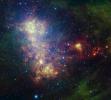
|
-
PIA12485:
-
Little Galaxy Explored
Full Resolution:
TIFF
(164.3 MB)
JPEG
(14.03 MB)
|

|
2009-11-23 |
|
Spitzer Space Telescope
|
IRAC
|
1600x1600x3 |
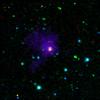
|
-
PIA12377:
-
Twin Brown Dwarfs Wrapped in a Blanket
Full Resolution:
TIFF
(7.693 MB)
JPEG
(141.3 kB)
|

|
2009-11-10 |
|
Chandra X-ray Observatory
Hubble Space Telescope
Spitzer Space Telescope
|
IRAC
|
9725x4862x3 |
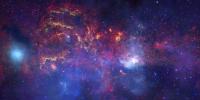
|
-
PIA12348:
-
Great Observatories' Unique Views of the Milky Way
Full Resolution:
TIFF
(141.8 MB)
JPEG
(3.839 MB)
|

|
2009-10-07 |
|
Hubble Space Telescope
Spitzer Space Telescope
|
IRAC
|
387x727x3 |

|
-
PIA12259:
-
Infrared Ring around Saturn
Full Resolution:
TIFF
(845.1 kB)
JPEG
(50.56 kB)
|

|
2009-08-12 |
Cepheus B
|
Chandra X-ray Observatory
Spitzer Space Telescope
|
Chandra X-ray Telescope
IRAC
|
2749x3600x3 |

|
-
PIA12169:
-
Trigger-Happy Cloud
Full Resolution:
TIFF
(29.69 MB)
JPEG
(402.1 kB)
|

|
2009-08-05 |
|
Spitzer Space Telescope
|
IRAC
|
1493x1319x3 |
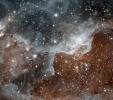
|
-
PIA12164:
-
Spitzer's First Warm Images
Full Resolution:
TIFF
(5.919 MB)
JPEG
(231.7 kB)
|

|
2009-07-23 |
NGC 1097
|
Spitzer Space Telescope
|
IRAC
|
2056x2056x3 |
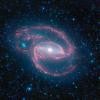
|
-
PIA12151:
-
Coiled Creature of the Night
Full Resolution:
TIFF
(12.7 MB)
JPEG
(467.9 kB)
|

|
2009-06-10 |
Milky Way
|
Spitzer Space Telescope
|
IRAC
|
2934x2052x3 |
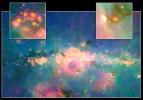
|
-
PIA12074:
-
Baby Stars Finally Found in Jumbled Galactic Center
Full Resolution:
TIFF
(18.06 MB)
JPEG
(805.7 kB)
|

|
2009-04-30 |
Messier 81
|
Spitzer Space Telescope
|
IRAC
|
2336x1144x3 |
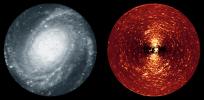
|
-
PIA12073:
-
"Missing Link" Found
Full Resolution:
TIFF
(8.027 MB)
JPEG
(275.4 kB)
|

|
2009-04-30 |
|
Spitzer Space Telescope
|
IRAC
|
1750x940x3 |
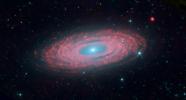
|
-
PIA12001:
-
Why Are Galaxies So Smooth?
Full Resolution:
TIFF
(4.943 MB)
JPEG
(117.7 kB)
|

|
2009-04-03 |
M33
|
Spitzer Space Telescope
|
IRAC
|
4300x2800x3 |
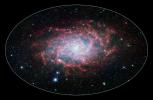
|
-
PIA11970:
-
M33: A Close Neighbor Reveals its True Size and Splendor
Full Resolution:
TIFF
(36.12 MB)
JPEG
(1.858 MB)
|

|
2009-04-03 |
M33
|
Spitzer Space Telescope
|
IRAC
MIPS
|
4300x2800x3 |
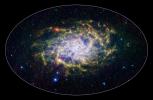
|
-
PIA11969:
-
M33: A Close Neighbor Reveals its True Size and Splendor (3-color composite)
Full Resolution:
TIFF
(36.12 MB)
JPEG
(1.714 MB)
|

|
2009-03-16 |
NGC 6240
|
Spitzer Space Telescope
|
IRAC
|
3921x3805x3 |
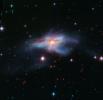
|
-
PIA11828:
-
Galaxies Collide to Create Hot, Huge Galaxy
Full Resolution:
TIFF
(44.76 MB)
JPEG
(1.418 MB)
|

|
2009-03-12 |
NGC 6543
|
Spitzer Space Telescope
|
IRAC
|
1700x1700x3 |
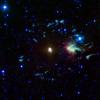
|
-
PIA11827:
-
Galactic Dust Bunnies Found to Contain Carbon After All
Full Resolution:
TIFF
(8.684 MB)
JPEG
(232 kB)
|

|
2009-02-10 |
Messier 101
|
Hubble Space Telescope
Spitzer Space Telescope
|
Chandra X-ray Telescope
IRAC
Visible Light
|
7200x7200x3 |
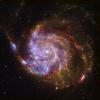
|
-
PIA11797:
-
NASA's Great Observatories Celebrate the International Year of Astronomy
Full Resolution:
TIFF
(155.5 MB)
JPEG
(6.529 MB)
|

|
2009-02-10 |
Messier 101
|
Hubble Space Telescope
Spitzer Space Telescope
|
IRAC
|
7200x7200x3 |
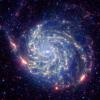
|
-
PIA11796:
-
Spitzer Space Telescope's View of Galaxy Messier 101
Full Resolution:
TIFF
(155.5 MB)
JPEG
(2.86 MB)
|

|
2009-01-28 |
|
Spitzer Space Telescope
|
IRAC
|
638x477x3 |
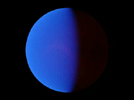
|
-
PIA11392:
-
Tour of Planet with Extreme Temperature Swings

Full Resolution:
TIFF
(914.2 kB)
JPEG
(9.75 kB)
|

|
2009-01-28 |
|
Spitzer Space Telescope
|
IRAC
|
3000x2400x3 |
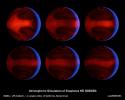
|
-
PIA11391:
-
Severe Exoplanetary Storm
Full Resolution:
TIFF
(21.6 MB)
JPEG
(243.5 kB)
|

|
2009-01-28 |
|
Spitzer Space Telescope
|
IRAC
|
3000x2400x3 |
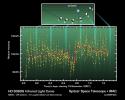
|
-
PIA11390:
-
Light from Red-Hot Planet
Full Resolution:
TIFF
(21.6 MB)
JPEG
(506.4 kB)
|

|
2009-01-06 |
Cassiopeia A
|
Chandra X-ray Observatory
Spitzer Space Telescope
|
Chandra X-ray Telescope
IRAC
|
719x479x3 |
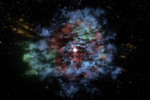
|
-
PIA11748:
-
Supernova Remnant in 3-D

Full Resolution:
TIFF
(1.035 MB)
JPEG
(36.78 kB)
|

|
2009-01-06 |
|
Spitzer Space Telescope
|
IRAC
|
708x799x3 |

|
-
PIA11747:
-
Baby Jupiters Must Gain Weight Fast
Full Resolution:
TIFF
(1.699 MB)
JPEG
(82.57 kB)
|

|
2008-12-16 |
|
Spitzer Space Telescope
|
IRAC
MIPS
|
1500x1500x3 |
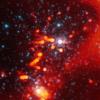
|
-
PIA11726:
-
Devastated Stellar Neighborhood
Full Resolution:
TIFF
(6.762 MB)
JPEG
(130.6 kB)
|

|
2008-12-08 |
|
Spitzer Space Telescope
|
IRAC
|
2674x2176x3 |
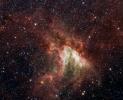
|
-
PIA11445:
-
Celestial Sea of Stars
Full Resolution:
TIFF
(17.47 MB)
JPEG
(1.163 MB)
|

|
2008-12-08 |
M17
|
Spitzer Space Telescope
|
IRAC
|
2674x2176x3 |
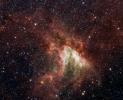
|
-
PIA12071:
-
Celestial Sea of Stars
Full Resolution:
TIFF
(17.47 MB)
JPEG
(1.152 MB)
|

|
2008-10-08 |
NGC 346
|
Spitzer Space Telescope
|
IRAC
|
1560x1560x3 |
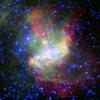
|
-
PIA11227:
-
Stellar Work of Art
Full Resolution:
TIFF
(7.314 MB)
JPEG
(245.9 kB)
|

|
2008-10-06 |
NGC 6193
|
Chandra X-ray Observatory
Spitzer Space Telescope
|
Chandra X-ray Telescope
IRAC
|
3300x3135x3 |
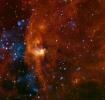
|
-
PIA11226:
-
RCW 108: Massive Young Stars Trigger Stellar Birth
Full Resolution:
TIFF
(31.04 MB)
JPEG
(524.6 kB)
|

|
2008-09-18 |
Perseus
|
Spitzer Space Telescope
|
IRAC
|
1760x1160x3 |
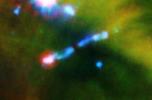
|
-
PIA11173:
-
Laser-Sharp Jet Splits Water
Full Resolution:
TIFF
(6.134 MB)
JPEG
(71.09 kB)
|

|
2008-08-22 |
W5
|
Spitzer Space Telescope
|
IRAC
|
6436x7288x3 |

|
-
PIA11047:
-
Spitzer Reveals Stellar 'Family Tree'
Full Resolution:
TIFF
(140.7 MB)
JPEG
(4.212 MB)
|

|
2008-08-22 |
W5
|
Spitzer Space Telescope
|
IRAC
MIPS
|
6436x7288x3 |

|
-
PIA11046:
-
Spitzer Reveals Stellar 'Family Tree'
Full Resolution:
TIFF
(140.7 MB)
JPEG
(3.055 MB)
|

|
2008-07-21 |
Messier 101
|
Spitzer Space Telescope
|
IRAC
Infrared Spectrograph (IRS)
MIPS
|
2766x2766x3 |
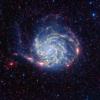
|
-
PIA10968:
-
"No Organics" Zone Circles Pinwheel
Full Resolution:
TIFF
(22.95 MB)
JPEG
(1.154 MB)
|

|
2008-07-21 |
Messier 101
|
Spitzer Space Telescope
|
IRAC
|
2766x2766x3 |
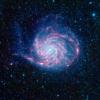
|
-
PIA10967:
-
Pinwheel Looks 'Fab' in Infrared
Full Resolution:
TIFF
(22.95 MB)
JPEG
(1.421 MB)
|

|
2008-07-15 |
|
Spitzer Space Telescope
|
IRAC
MIPS
|
8000x4500x3 |
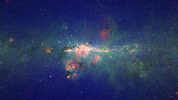
|
-
PIA10955:
-
'Peony Nebula' Star Settles for Silver Medal

Full Resolution:
TIFF
(108 MB)
JPEG
(6.04 MB)
|

|
2008-06-03 |
Milky Way
|
Spitzer Space Telescope
|
IRAC
MIPS
|
14400x10800x3 |
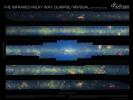
|
-
PIA10750:
-
Spitzer Finds Clarity in the Inner Milky Way
Full Resolution:
TIFF
(466.6 MB)
JPEG
(19.03 MB)
|

|
2008-06-03 |
Milky Way
|
Spitzer Space Telescope
|
IRAC
|
14400x10800x3 |
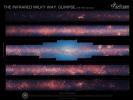
|
-
PIA10749:
-
Inner Milky Way Raging with Star Formation
Full Resolution:
TIFF
(466.6 MB)
JPEG
(26.13 MB)
|

|
2008-05-28 |
|
Spitzer Space Telescope
|
IRAC
Infrared Spectrograph (IRS)
MIPS
|
925x925x3 |
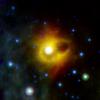
|
-
PIA10711:
-
Ghostly Ring
Full Resolution:
TIFF
(2.571 MB)
JPEG
(35.42 kB)
|

|
2008-04-10 |
Omega Centauri
|
Spitzer Space Telescope
|
IRAC
Multiband Imaging Photometer (MIPS)
|
1400x1400x3 |
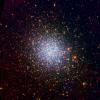
|
-
PIA10372:
-
Omega Centauri Looks Radiant in Infrared
Full Resolution:
TIFF
(5.891 MB)
JPEG
(356.3 kB)
|

|
2008-02-12 |
Abell 1689
|
Hubble Space Telescope
Spitzer Space Telescope
|
Advanced Camera for Surveys
Infrared Array Camera (IRAC)
NICMOS
|
3813x3367x3 |
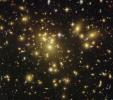
|
-
PIA10237:
-
Astronomers Uncover One of the Youngest and Brightest Galaxies in the Early Universe
Full Resolution:
TIFF
(38.52 MB)
JPEG
(3.231 MB)
|

|
2008-02-11 |
Rho Ophiuchi
|
Spitzer Space Telescope
|
IRAC
|
6020x2905x3 |
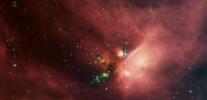
|
-
PIA10182:
-
Young Stars in Their Baby Blanket of Dust
Full Resolution:
TIFF
(52.46 MB)
JPEG
(1.065 MB)
|

|
2008-02-11 |
Rho Ophiuchi
|
Spitzer Space Telescope
|
IRAC
Multiband Imaging Photometer (MIPS)
|
6020x2905x3 |
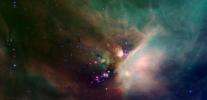
|
-
PIA10181:
-
Young Stars in Their Baby Blanket of Dust
Full Resolution:
TIFF
(52.46 MB)
JPEG
(812 kB)
|

|
2007-12-18 |
NGC 4258
|
Spitzer Space Telescope
|
IRAC
|
3000x2501x3 |
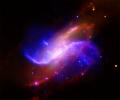
|
-
PIA10204:
-
Anomalous Arms
Full Resolution:
TIFF
(22.51 MB)
JPEG
(238.8 kB)
|

|
2007-12-13 |
M51
|
Galaxy Evolution Explorer (GALEX)
Spitzer Space Telescope
|
IRAC
Ultraviolet/Visible Camera
|
1978x2850x3 |

|
-
PIA10200:
-
A Classic Beauty
Full Resolution:
TIFF
(16.93 MB)
JPEG
(526.5 kB)
|

|
2007-11-29 |
L1157
|
Spitzer Space Telescope
|
IRAC
|
1171x1444x3 |

|
-
PIA10119:
-
Baby Picture of our Solar System

Full Resolution:
TIFF
(5.079 MB)
JPEG
(154.9 kB)
|

|
2007-11-08 |
HH 46/47
|
Spitzer Space Telescope
|
IRAC
|
2000x1600x3 |
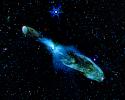
|
-
PIA10111:
-
Bubbly Little Star
Full Resolution:
TIFF
(9.613 MB)
JPEG
(240.8 kB)
|

|
2007-10-22 |
|
Spitzer Space Telescope
|
IRAC
|
2084x2302x3 |

|
-
PIA10087:
-
Wanted: Galactic Thief Who Steals Gas
Full Resolution:
TIFF
(14.41 MB)
JPEG
(236.2 kB)
|

|
2007-09-13 |
|
Spitzer Space Telescope
|
IRAC
|
3300x3300x3 |
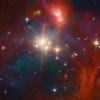
|
-
PIA09926:
-
Infrared Coronet Cluster
Full Resolution:
TIFF
(32.67 MB)
JPEG
(583.5 kB)
|

|
2007-09-13 |
|
Spitzer Space Telescope
|
IRAC
Chandra X-ray Telescope
|
3300x3300x3 |
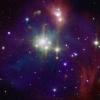
|
-
PIA09925:
-
Coronet: A Star-Formation Neighbor
Full Resolution:
TIFF
(32.67 MB)
JPEG
(407 kB)
|

|
2007-08-29 |
NGC 1333
|
Spitzer Space Telescope
|
IRAC
|
3000x2400x3 |
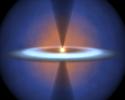
|
-
PIA09966:
-
Steamy Solar System
Full Resolution:
TIFF
(21.6 MB)
JPEG
(167.5 kB)
|

|
2007-08-24 |
Helix Nebula
|
Spitzer Space Telescope
|
IRAC
|
4370x4070x3 |
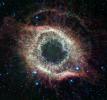
|
-
PIA09962:
-
Spitzer Celebrates Fourth Anniversary with Celestial Fireworks
Full Resolution:
TIFF
(53.36 MB)
JPEG
(2.378 MB)
|

|
2007-08-06 |
CL0958+4702
|
Spitzer Space Telescope
|
IRAC
|
690x690x3 |
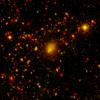
|
-
PIA09955:
-
Fearsome Foursome
Full Resolution:
TIFF
(1.43 MB)
JPEG
(64.28 kB)
|

|
2007-06-13 |
N132D
|
Spitzer Space Telescope
|
Chandra X-ray Telescope
Infrared Array Camera (IRAC)
Multiband Imaging Photometer (MIPS)
|
1806x1200x3 |
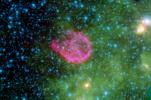
|
-
PIA09604:
-
A Supernova's Shockwaves
Full Resolution:
TIFF
(6.511 MB)
JPEG
(206.6 kB)
|

|
2007-06-01 |
Messier 81
|
Galaxy Evolution Explorer (GALEX)
Hubble Space Telescope
Spitzer Space Telescope
|
GALEX Telescope
Infrared Array Camera (IRAC)
Visible Light
|
3180x2456x3 |
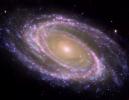
|
-
PIA09579:
-
M81 Galaxy is Pretty in Pink
Full Resolution:
TIFF
(23.43 MB)
JPEG
(1.061 MB)
|

|
2007-05-29 |
|
Spitzer Space Telescope
|
IRAC
|
4097x3557x3 |
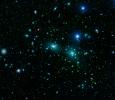
|
-
PIA09561:
-
Dwarfs in Coma Cluster
Full Resolution:
TIFF
(43.72 MB)
JPEG
(1.199 MB)
|

|
2007-05-17 |
Barnard 30
|
Spitzer Space Telescope
|
IRAC
|
3086x1711x3 |
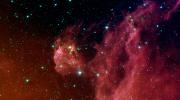
|
-
PIA09412:
-
Young Stars Emerge from Orion's Head
Full Resolution:
TIFF
(15.84 MB)
JPEG
(627.4 kB)
|

|
2007-05-17 |
Barnard 30
|
Spitzer Space Telescope
|
IRAC
Multiband Imaging Photometer (MIPS)
|
3182x1282x3 |
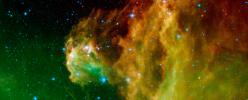
|
-
PIA09411:
-
Young Stars Emerge from Orion's Head
Full Resolution:
TIFF
(12.24 MB)
JPEG
(490.4 kB)
|

|
2007-05-09 |
HD 189733b
|
Spitzer Space Telescope
|
IRAC
|
640x467x3 |
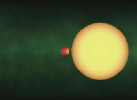
|
-
PIA09377:
-
How to Map a Very Faraway Planet (animation)

Full Resolution:
TIFF
(897.8 kB)
JPEG
(11.68 kB)
|

|
2007-05-09 |
HD 189733b
|
Spitzer Space Telescope
|
IRAC
|
640x473x3 |
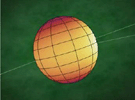
|
-
PIA09376:
-
First Map of Alien World (animation)

Full Resolution:
TIFF
(909.3 kB)
JPEG
(23.38 kB)
|

|
2007-05-01 |
|
Spitzer Space Telescope
|
IRAC
Visible Light
|
2838x948x3 |
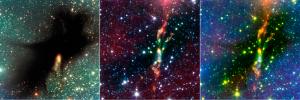
|
-
PIA09338:
-
Spitzer Digs Up Hidden Stars
Full Resolution:
TIFF
(8.071 MB)
JPEG
(398.7 kB)
|

|
2007-04-18 |
Rosette Nebula
|
Spitzer Space Telescope
|
IRAC
|
639x479x3 |
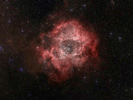
|
-
PIA09268:
-
Infrared Rose

Full Resolution:
TIFF
(919.4 kB)
JPEG
(54.85 kB)
|

|
2007-04-18 |
Rosette Nebula
|
Spitzer Space Telescope
|
IRAC
|
1669x1439x3 |
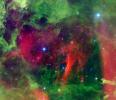
|
-
PIA09267:
-
Every Rose has a Thorn
Full Resolution:
TIFF
(7.217 MB)
JPEG
(286.2 kB)
|

|
2007-04-16 |
Pleiades
|
Spitzer Space Telescope
|
IRAC
Multiband Imaging Photometer (MIPS)
|
2855x2855x3 |
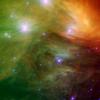
|
-
PIA09263:
-
The Seven Sisters Pose for Spitzer
Full Resolution:
TIFF
(24.45 MB)
JPEG
(779.5 kB)
|

|
2007-04-16 |
Pleiades
|
Spitzer Space Telescope
|
IRAC
|
2855x2855x3 |
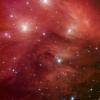
|
-
PIA09262:
-
Pink Pleiades
Full Resolution:
TIFF
(24.45 MB)
JPEG
(980.3 kB)
|

|
2007-03-29 |
|
Spitzer Space Telescope
|
IRAC
|
3000x2400x3 |
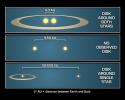
|
-
PIA09227:
-
Where Planets Take up Residence
Full Resolution:
TIFF
(21.6 MB)
JPEG
(348.8 kB)
|

|
2007-02-12 |
Helix Nebula
|
Spitzer Space Telescope
|
IRAC
Multiband Imaging Photometer (MIPS)
|
4279x3559x3 |
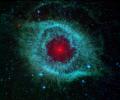
|
-
PIA09178:
-
Comets Kick up Dust in Helix Nebula
Full Resolution:
TIFF
(45.69 MB)
JPEG
(1.944 MB)
|

|
2007-01-26 |
|
Spitzer Space Telescope
|
IRAC
|
720x720x3 |
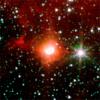
|
-
PIA09119:
-
Luminous Blue Variable: Destined To Be a Supernova?
Full Resolution:
TIFF
(1.557 MB)
JPEG
(53.65 kB)
|

|
2007-01-16 |
|
Galaxy Evolution Explorer (GALEX)
Spitzer Space Telescope
|
IRAC
|
975x700x3 |
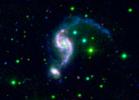
|
-
PIA09106:
-
Older Galaxy Pair Has Surprisingly Youthful Glow
Full Resolution:
TIFF
(2.051 MB)
JPEG
(55.51 kB)
|

|
2007-01-09 |
|
Hubble Space Telescope
Spitzer Space Telescope
|
IRAC
Multiband Imaging Photometer (MIPS)
|
2394x2571x3 |

|
-
PIA09109:
-
Unwrapping the Pillars
Full Resolution:
TIFF
(18.49 MB)
JPEG
(578.7 kB)
|

|
2007-01-09 |
|
Spitzer Space Telescope
|
IRAC
Multiband Imaging Photometer (MIPS)
|
2100x2400x3 |

|
-
PIA09108:
-
Eagle Nebula Flaunts its Infrared Feathers
Full Resolution:
TIFF
(15.14 MB)
JPEG
(1.048 MB)
|

|
2007-01-09 |
|
Hubble Space Telescope
Spitzer Space Telescope
|
IRAC
Multiband Imaging Photometer (MIPS)
|
2100x2400x3 |

|
-
PIA09107:
-
Cosmic Epic Unfolds in Infrared
Full Resolution:
TIFF
(15.14 MB)
JPEG
(890.6 kB)
|

|
2006-12-18 |
|
Spitzer Space Telescope
|
IRAC
|
2430x1525x3 |
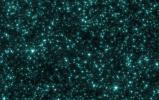
|
-
PIA09100:
-
The Universe's First Fireworks
Full Resolution:
TIFF
(11.13 MB)
JPEG
(405.3 kB)
|

|
2006-12-08 |
|
Spitzer Space Telescope
|
IRAC
|
3000x2141x3 |
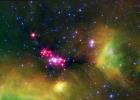
|
-
PIA09072:
-
Seeing Stars in Serpens
Full Resolution:
TIFF
(19.27 MB)
JPEG
(752 kB)
|

|
2006-12-08 |
|
Spitzer Space Telescope
|
IRAC
|
2320x2420x3 |

|
-
PIA09071:
-
Stellar Debris in the Large Magellanic Cloud
Full Resolution:
TIFF
(16.86 MB)
JPEG
(373.3 kB)
|

|
2006-11-07 |
|
Spitzer Space Telescope
|
IRAC
Ultraviolet/Visible Camera
|
6000x6000x3 |
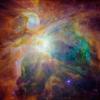
|
-
PIA01322:
-
Chaos at the Heart of Orion
Full Resolution:
TIFF
(108 MB)
JPEG
(1.536 MB)
|

|
2006-10-27 |
|
Spitzer Space Telescope
|
IRAC
Multiband Imaging Photometer (MIPS)
|
2448x2244x3 |
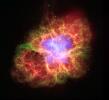
|
-
PIA01320:
-
Dead Star Creates Celestial Havoc
Full Resolution:
TIFF
(16.5 MB)
JPEG
(466.2 kB)
|

|
2006-10-27 |
|
Spitzer Space Telescope
|
IRAC
Multiband Imaging Photometer (MIPS)
|
3000x2300x3 |
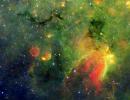
|
-
PIA01318:
-
Where Galactic Snakes Live
Full Resolution:
TIFF
(20.7 MB)
JPEG
(1.154 MB)
|

|
2006-10-26 |
Cassiopeia A
|
Spitzer Space Telescope
|
IRAC
|
1600x1600x3 |
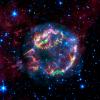
|
-
PIA01903:
-
Lighting up a Dead Star's Layers
Full Resolution:
TIFF
(7.693 MB)
JPEG
(218 kB)
|

|
2006-10-26 |
Cassiopeia A
|
Spitzer Space Telescope
|
IRAC
|
638x477x3 |
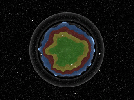
|
-
PIA01902:
-
Order Amidst Chaos of Star's Explosion (Artist Concept)

Full Resolution:
TIFF
(914.2 kB)
JPEG
(56.6 kB)
|

|
2006-09-01 |
|
Spitzer Space Telescope
|
IRAC
Multiband Imaging Photometer (MIPS)
|
6000x6000x3 |
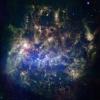
|
-
PIA07137:
-
What's Old is New in the Large Magellanic Cloud
Full Resolution:
TIFF
(108 MB)
JPEG
(8.784 MB)
|

|
2006-09-01 |
|
Spitzer Space Telescope
|
IRAC
|
6000x6000x3 |
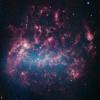
|
-
PIA07136:
-
Our Chaotic Neighbor
Full Resolution:
TIFF
(108 MB)
JPEG
(11.3 MB)
|

|
2006-08-15 |
Orion
|
Spitzer Space Telescope
|
IRAC
|
3000x1800x3 |
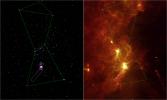
|
-
PIA08656:
-
Infrared Spotlight on Orion's Sword
Full Resolution:
TIFF
(16.2 MB)
JPEG
(328.7 kB)
|

|
2006-08-15 |
Orion
|
Spitzer Space Telescope
|
IRAC
|
19937x6972x3 |
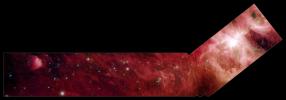
|
-
PIA08655:
-
A Slice of Orion
Full Resolution:
TIFF
(417 MB)
JPEG
(5.782 MB)
|

|
2006-08-15 |
Orion
|
Spitzer Space Telescope
|
IRAC
|
2240x2086x3 |
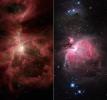
|
-
PIA08654:
-
The Infrared Hunter
Full Resolution:
TIFF
(14.03 MB)
JPEG
(324.9 kB)
|

|
2006-08-15 |
Orion
|
Spitzer Space Telescope
|
IRAC
|
3220x6000x3 |

|
-
PIA08653:
-
The Sword of Orion

Full Resolution:
TIFF
(57.96 MB)
JPEG
(738.3 kB)
|

|
2006-07-21 |
|
Hubble Space Telescope
Spitzer Space Telescope
|
IRAC
Visible Light
|
900x360x3 |
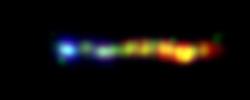
|
-
PIA08617:
-
Black Hole Spills Kaleidoscope of Color
Full Resolution:
TIFF
(973.2 kB)
JPEG
(10.56 kB)
|

|
2006-06-09 |
|
Spitzer Space Telescope
|
IRAC
|
2325x2329x3 |
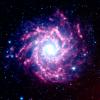
|
-
PIA08533:
-
Supernova Dust Factory in M74
Full Resolution:
TIFF
(16.26 MB)
JPEG
(325.5 kB)
|

|
2006-06-06 |
|
Hubble Space Telescope
Spitzer Space Telescope
|
IRAC
Multiband Imaging Photometer (MIPS)
|
1778x1778x3 |
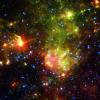
|
-
PIA08516:
-
Dusty Death of a Massive Star
Full Resolution:
TIFF
(9.498 MB)
JPEG
(553.1 kB)
|

|
2006-06-05 |
|
Spitzer Space Telescope
|
IRAC
Mosaic-I Camera
Mayall 4-Meter Telescope
|
1114x1380x3 |

|
-
PIA08509:
-
Galaxies Gather at Great Distances
Full Resolution:
TIFF
(4.618 MB)
JPEG
(365.3 kB)
|

 Planetary Data System
Planetary Data System



















































































































